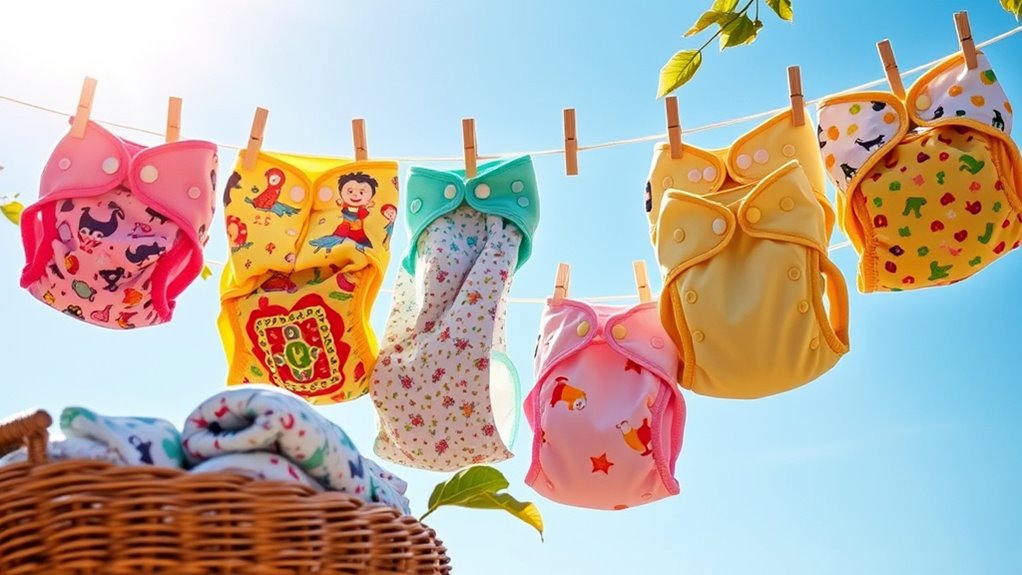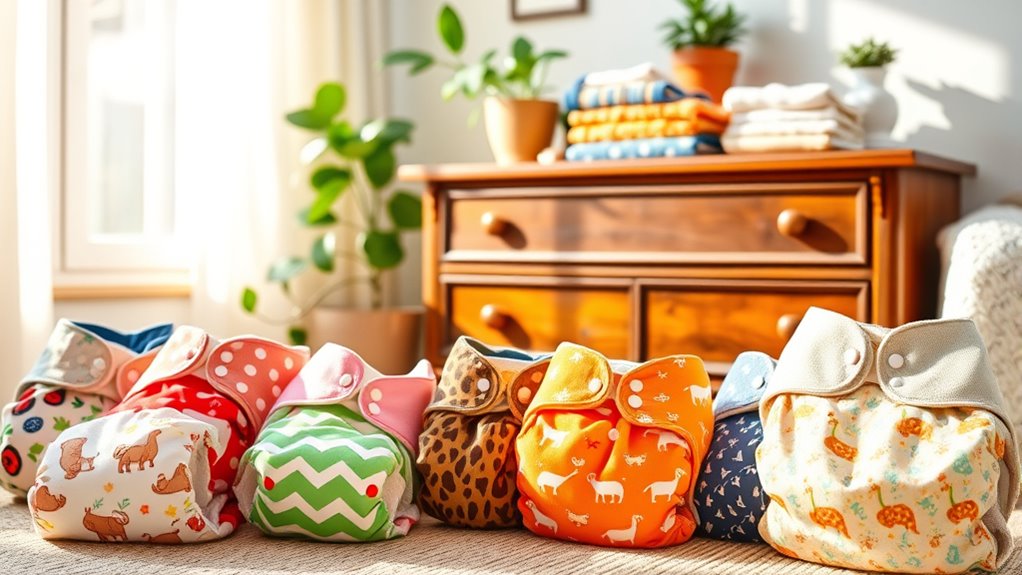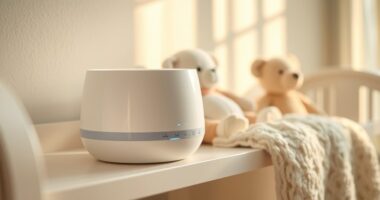Cloth diapers are gaining traction as eco-conscious parents see their benefits. They significantly cut down landfill waste compared to disposables, which can take centuries to decompose. While the initial investment is higher, you’ll save thousands in the long run, especially when reusing them for multiple children. Plus, cloth diapers are gentler on your baby’s skin, reducing diaper rash and irritation. There’s a lot more to discover about their advantages, so keep exploring!
Key Takeaways
- Cloth diapers are gaining popularity due to their significant reduction in landfill waste compared to disposables, appealing to environmentally conscious parents.
- The long-term financial savings from reusing cloth diapers outweigh the higher initial investment, making them an attractive option for families.
- Health benefits, such as reduced skin irritation and fewer harmful chemicals, are driving parents towards cloth diapers for their babies’ well-being.
- Cloth diapers enhance potty training by providing immediate sensory feedback, helping children recognize bodily sensations and communicate their needs.
- The variety of styles, materials, and customization options available in cloth diapers cater to diverse parenting preferences and lifestyles.

When you consider the environmental and financial impact of diapering your child, cloth diapers emerge as a compelling choice. They significantly reduce landfill waste compared to disposable diapers, which can take up to 500 years to decompose. By using cloth, you play a vital role in minimizing your family’s carbon footprint. Cloth diapers represent 2% to 4% of solid waste in landfills, highlighting their potential to alleviate the burden on waste management systems.
These diapers typically require less energy and fewer resources to manufacture, making them a more sustainable option. Many cloth diapers are crafted from eco-friendly materials like cotton and bamboo, which not only help the environment but also contribute to reducing harmful carbon dioxide and methane emissions associated with landfill waste.
While the initial investment in cloth diapers might seem higher, they offer substantial long-term savings. You can ultimately save thousands of dollars by reusing them for multiple children, which means you won’t be constantly buying disposables.
The initial cost of cloth diapers is offset by significant long-term savings, especially when reused for multiple children.
Plus, the secondhand market for cloth diapers allows you to sell or donate used ones, further cutting costs. When you factor in the relatively low expenses of washing and drying cloth, the financial benefits become even clearer. Once you’ve made the purchase, you won’t incur ongoing costs like you’d with disposables.
Cloth diapers also provide health benefits for your little one. Their natural materials reduce the risk of skin irritation caused by the chemicals often found in disposable options. The breathability of cloth diapers helps decrease diaper rash and minimizes exposure to potentially harmful chemicals linked to health issues later in life.
If your baby has sensitive skin, cloth options are a gentler alternative, leading to fewer rashes overall. Moreover, cloth diapers can facilitate earlier potty training. They help children become more aware of their bodily sensations, often leading to faster progression in this crucial developmental stage.
The immediate sensory feedback cloth diapers provide when wet encourages children to communicate their needs, making the transition to potty training smoother. In fact, in cultures where cloth diapering is prevalent, children typically potty train earlier.
With a variety of styles, materials, colors, and patterns available, cloth diapers can easily fit your lifestyle and preferences. Whether you prefer prefolds, fitteds, or pocket diapers, you’ll find options that suit different ages and stages of your child’s development.
In making the switch to cloth, you’re choosing a practical, eco-friendly, and cost-effective solution for your family’s diapering needs.
Frequently Asked Questions
How Do I Properly Clean Cloth Diapers?
To properly clean cloth diapers, start with a cold pre-rinse to remove waste.
For breastfed babies, this is easier since their waste is water-soluble.
Use a cloth diaper-safe detergent and wash on the longest cycle in warm to hot water.
Avoid fabric softeners, and air dry or tumble dry on low to maintain quality.
Regularly strip diapers to remove buildup, and use sunlight to help with stains and odors.
Are Cloth Diapers More Environmentally Friendly Than Disposables?
Imagine a garden thriving with sustainable plants instead of a barren landscape filled with plastic.
When you compare cloth diapers to disposables, cloths often come out ahead environmentally. While they consume more water for washing, their reusability significantly cuts down waste.
Plus, you can choose materials like organic cotton. In contrast, disposables pile up in landfills, taking centuries to decompose.
Can Cloth Diapers Cause Diaper Rash?
Yes, cloth diapers can cause diaper rash. If you don’t change them frequently, prolonged wetness might irritate your baby’s skin.
Chemical irritants in urine and feces can also lead to problems if they linger. If the fit is too tight or if you use harsh detergents, chafing and irritation can worsen.
To prevent this, change diapers often, use natural barrier creams, and ensure a snug but comfortable fit.
What Are the Costs Associated With Cloth Diapering?
Did you know that cloth diapering can save you up to $1,000 compared to disposables over a few years?
When considering costs, expect an initial investment of $300 to $1,250 for diapers and accessories. Ongoing expenses include laundry and detergent, which add up over time.
While the upfront costs may seem high, the potential for savings increases if you use them for multiple children or resell them later.
How Many Cloth Diapers Do I Need?
To determine how many cloth diapers you need, consider your baby’s age, laundry frequency, and diaper type.
For newborns, having 24-36 diapers is ideal for every 2-3 days of washing.
Infants typically require 20-24, while toddlers need around 16-20.
If you choose all-in-one diapers, you’ll need more since each change requires a full diaper.
Ultimately, aim for enough to avoid frequent laundry while ensuring your baby’s comfort.
Conclusion
As you explore the growing popularity of cloth diapers, consider this: families can save over $1,000 per child by choosing cloth instead of disposable options. This not only lightens the financial load but also benefits the environment by reducing landfill waste. With more parents choosing this eco-friendly alternative, you’re joining a movement that’s both sustainable and cost-effective. So why not give cloth diapers a try? You might just find they’re the perfect fit for your family!









